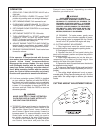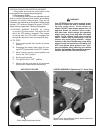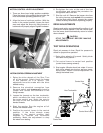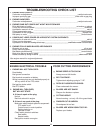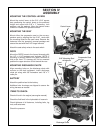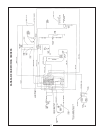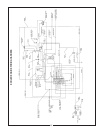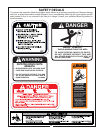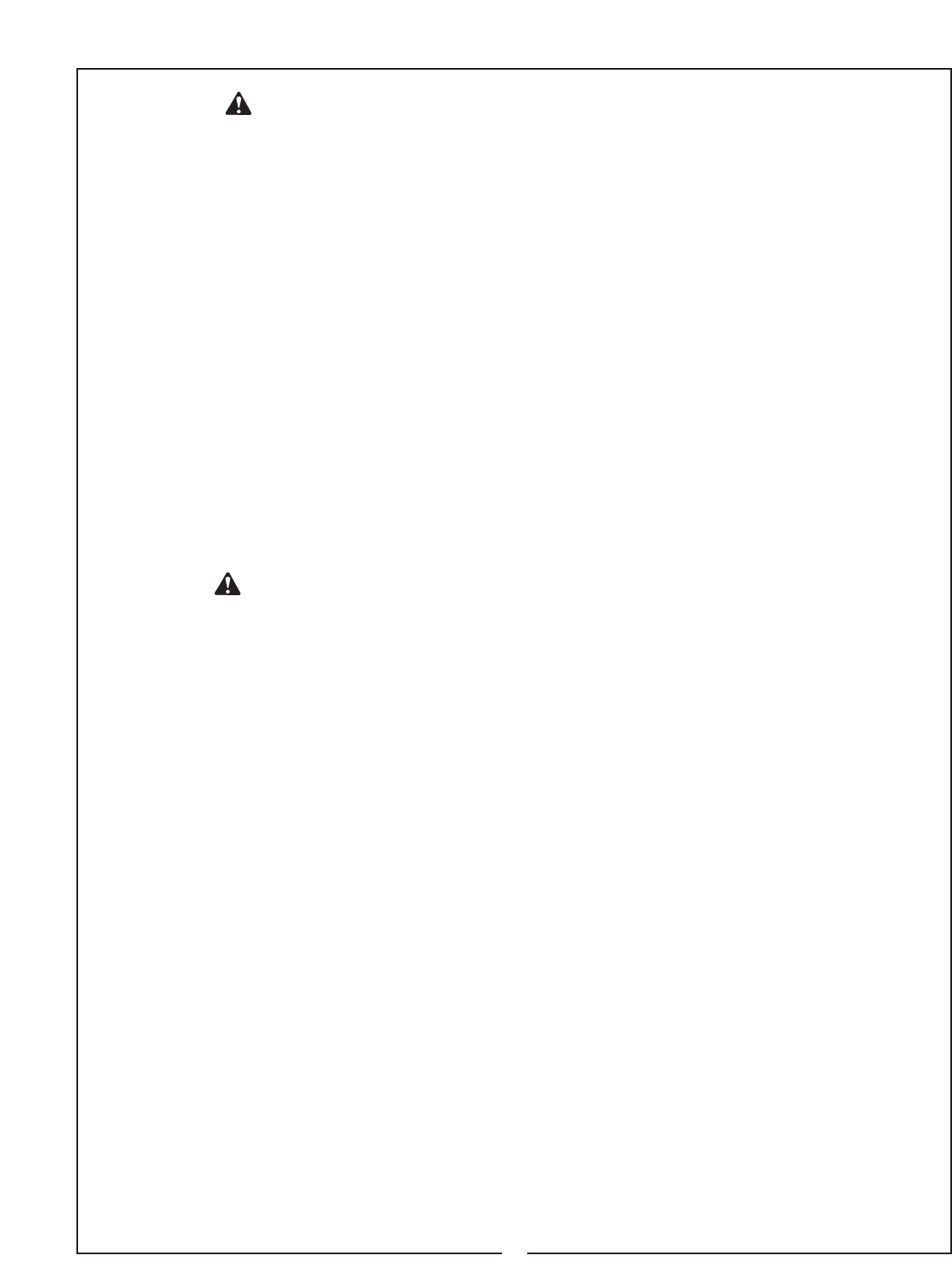
WARNING
HIGH PRESSURE HYDRAULIC FLUID LEAKS
CAN PENETRATE SKIN CAUSING SERIOUS
INJURY AND GANGRENE.
INJECTED FLUID MUST BE SURGICALLY
REMOVED WITHIN A FEW HOURS BY A DOC-
TOR FAMILIAR WITH THIS TYPE OF INJURY.
TO AVOID SERIOUS INJURY FROM
PRESSURE LEAKS:
● USE CARDBOARD AND NOT HANDS TO
SEARCH FOR LEAKS.
● RELIEVE HYDRAULIC PRESSURE BEFORE
WORKING ON SYSTEM.
● CHECK HYDRAULIC HOSES, LINES, AND
CONNECTIONS FOR TIGHTNESS AND
GOOD CONDITION BEFORE APPLYING
SYSTEM PRESSURE.
START-UP MAINTENANCE
HYDROSTATIC FLUID
Bush Hog recommends the use of 20W50 motor oil
in the hydrostatic reservoir.
START-UP PROCEDURE
The following start-up procedure should always be
followed when starting a new installation or when
restarting and installation in which the pump or
motor has been removed from the system.
Prior to starting the pump, make certain all system
components (reservoir, fittings, etc.) are clean prior
to filling with fluid.
Fill the reservoir with recommended fluid which
should be filtered prior to entering the reservoir.
Start the engine and idle at the lowest possible RPM.
With the bypass valve closed, slowly move the dis-
placement control in both the forward and reverse
directions. As air is purged from the unit, the oil level
in the reservoir will drop and bubbles may appear in
the fluid. Refill the reservoir as necessary.
Place the steering levers in the neutral position and
WARNING
TO AVOID INJURY FROM EQUIPMENT GROUND
TRAVEL AND MOVEMENT DURING
START-UP PROCEDURE:
DO NOT START OR JOG ENGINE UNTIL:
● PUMP IS IN NEUTRAL POSITION
● DRIVE WHEELS ARE RAISED OFF THE
GROUND.
● EQUIPMENT IS SECURELY BLOCKED-UP TO
KEEP WHEELS FROM GROUND CONTACT.
● PTO AND OTHER WORK FUNCTIONS ARE
DISCONNECTED.
● KEEP HANDS, HAIR AND CLOTHING AWAY
FROM ROTATING BLADES.
open the bypass valve. Slowly move the steering
levers in both the forward and reverse directions to
purge the air from the closed circuit.
Close the bypass valve and run the unit in both direc-
tions for several minutes until any remaining air is
purged from the unit. Refill the reservoir as necessary.
Stop the engine, check for and correct any fluid leaks,
and check the reservoir level. Add fluid if necessary.
The transmission is now ready for operation.
HYDROSTATIC MAINTENANCE
Check the reservoir daily for proper fluid level. Oil
level should be to the bottom of the slot on the reser-
voir baffle.
The pump and motor units normally do not require
regular fluid changes. The system filter should be
changed after the first 50 hours of break-in, then
every 250 hours thereafter. The fluid and filter should
be changed and the system cleaned if the fluid
becomes contaminated with foreign matter (water,
dirt, etc.).
PARKING BRAKE ADJUSTMENT
Check to make sure brake is adjusted properly.
Force on the brake handle to lock the brake in place
should be 30 pounds. To adjust the brake tension,
shorten or lengthen the horizontal brake linkage.
If further adjustment is needed at each individual
wheel brake:
1. Engage the brake lever (lever up).
2. Remove the wheel from the side needing adjusting.
3. With the brake engaged the spring length should
be 3-1/2” (measured to the inside of the spring loops).
4. If the spring length is different, shorten or lengthen
the vertical brake linkage.
5. Reinstall the wheel and torque the lug nuts.
Pump Drive Belt Tension Adjustment
1. Stop engine and remove key.
2. The pump drive belt tension is adjusted through a
spring loaded idler pulley.
3. Adjust the eye bolt so the spring length is 6” (mea-
sured to the inside of the spring loops).
19




